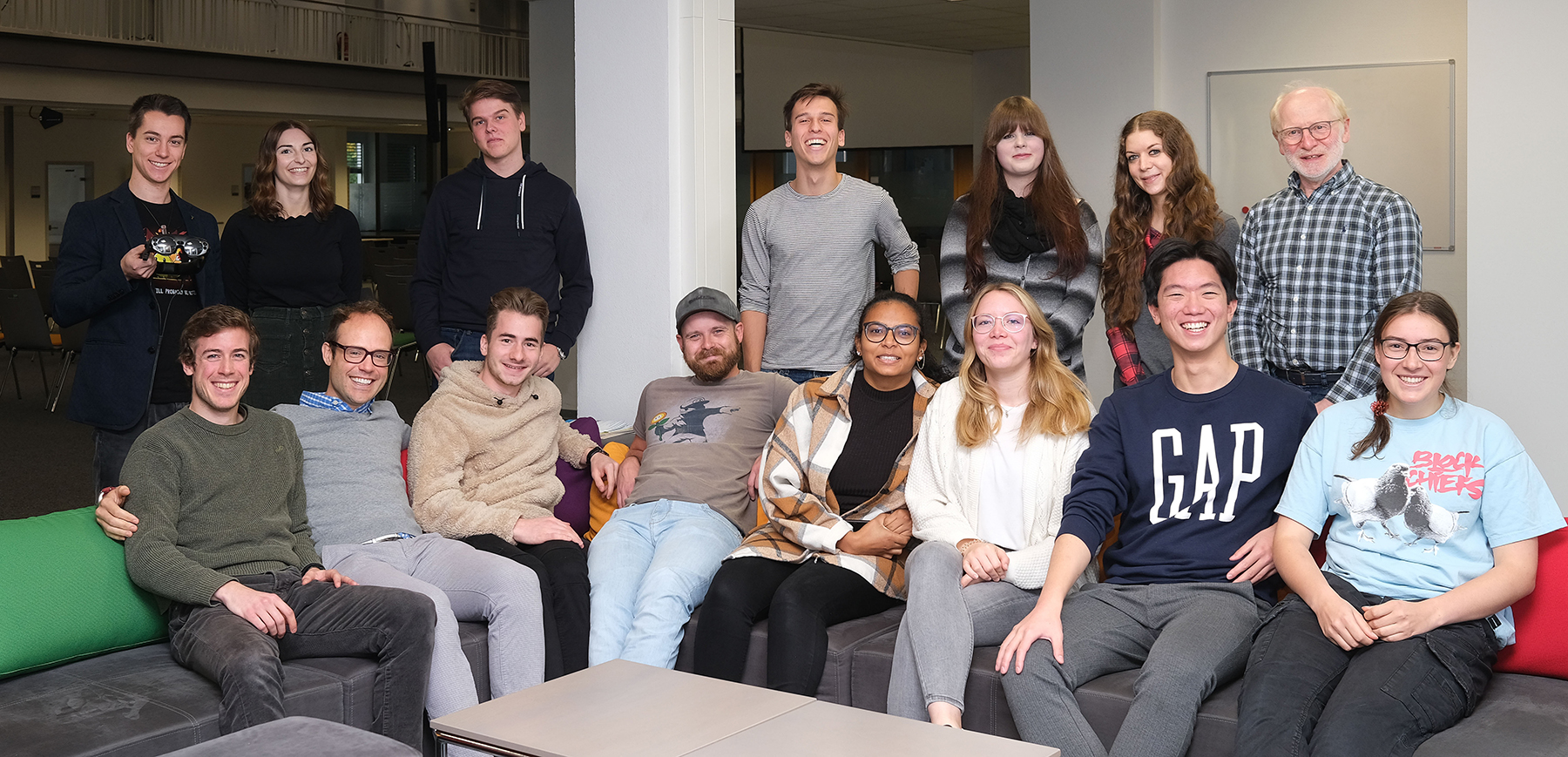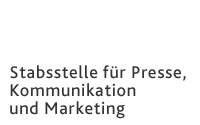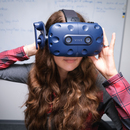Executive Department for
Press, Communication and Marketing
Adolf-Reichwein-Straße 2a Gebäude AVZ (Gebäudeteil AR-NA) 57068 Siegen
Phone: +49 (0)271/740-4915 Fax.: +49 (0)271/740-4911 E-Mail: presse@uni-siegen.de
Helping to shape the future of digital medicine
Students from the Universities of Siegen and Rotterdam are developing applications for digital medicine in a special international course.
A special teaching offer has started at the University of Siegen in the winter semester 2021/22. Students from the Universities of Siegen and Rotterdam are currently developing training programs for medical students in virtual reality (VR) and augmented reality (AR). The whole program is part of a special international course in the bachelor's degree programs in Medicine, Psychology and Clinical Technology at the Erasmus Medical Center (EMC) of the University of Rotterdam. The Rotterdam students, together with students from the Siegen "Digital Biomedical and Health Sciences" program, are learning skills to develop medical applications for VR and AR themselves. "We want to enable the students to help shape the future of digital medicine themselves. Based on our cooperation with the Erasmus Medical Center in Rotterdam, we can offer students this special teaching offer,” says Professor Dr. Rainer Brück, Dean of Studies at the School of Life Sciences at the University of Siegen.
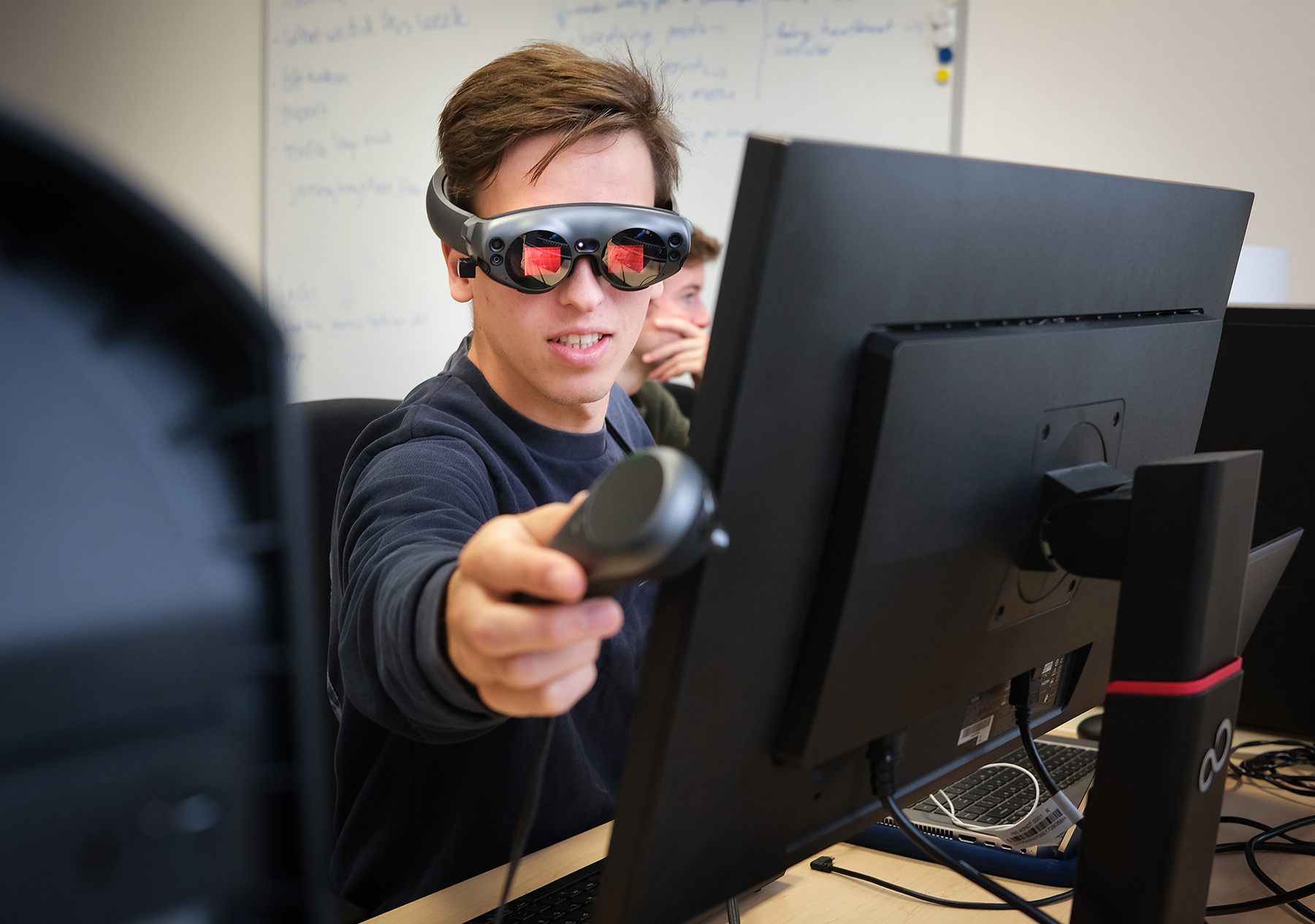
Gunnar Rosendahl (student from Siegen) and Tanner Tuttle (psychology student from Rotterdam) are two of the ten students taking part in this special course. Rosendahl finds it particularly exciting to work in an international team. "The course combines the most cutting edge hardware with instruction in solving high value medical problems with AR/VR, all in Siegen,” enthuses Rotterdamer Tuttle. "I’m surprised because many larger cities advocate such an approach but Siegen University is actually doing it." Prof. Brück adds, "Virtual technology content has been lacking in Rotterdam. The Rotterdammers find the Siegen course very profitable because this content complements their studies perfectly." In November 2019, the University of Siegen had already signed a cooperation agreement with the Erasmus Medical Center as part of the "Rethinking Medicine" model project. This enables special offers in teaching from which students of both universities benefit.
The VR application is a first-aid training for medical students. After the VR goggles are put on, the emergency scene becomes visible: A collapsed passerby lies motionless on the street. With the help of two controllers, he needs to be examined and prepared for the arrival of an emergency physician. Are the airways clear? Is the neck stable? Does the patient have any external injuries? First responders must remain calm and focused in such situations in order to perform all first aid measures correctly. The training software teaches the steps of the ABCDE scheme that can be found in any medical textbook - but much more impressively and directly through the interactive experience. While the procedure is explained step by step in the training mode, all steps must already have been internalized and performed independently in the examination mode. The aim of the training is to internalize all steps to such an extent that a routine is created for the emergency and no step is forgotten. In addition, costs for training materials or personnel can be saved.
All these ideas and the details were developed and implemented by the students themselves. Some of the students had previous experience in software development and medical informatics, others did not. In a theory part, Brück and his colleagues from the Medic@l XR team at the University of Siegen taught the basics. After that, they got down to practice.
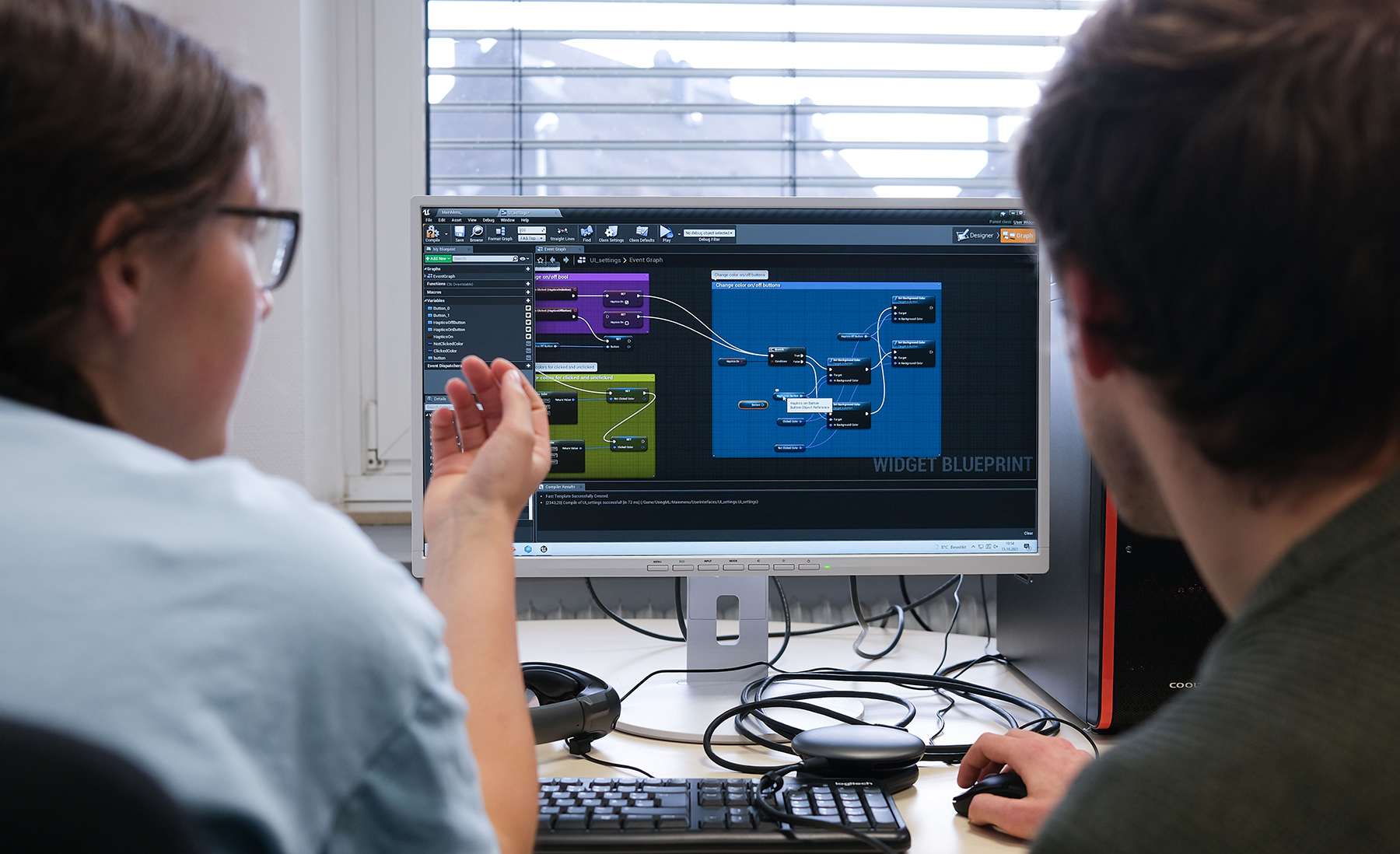
In addition to the first-aid program, a group of students developed a training program with which medical students are to learn how to listen correctly to a patient's heartbeat. A virtual anatomical model simulates the patient. With AR glasses, additional anatomical structures can be superimposed - for example, blood vessels, muscles and bones. The heartbeat must be listened to or palpated at various points in the training program. Among other things, the stethoscope has to be positioned in the right places. Different heartbeats sound depending on the location. The medical students' task is to find out whether the sounds are a normal heartbeat or a cardiac arrhythmia. The anatomical structures superimposed on the AR glasses are intended to give the medical students a better understanding of the anatomical relationships.
Prof. Brück is certain that the students from Siegen and Rotterdam will be able to effectively apply what they have learned from the special course in their later working lives. He and his colleagues from the School of Life Sciences know from their daily work in hospitals that there are many high-performance devices in the clinics. But they are made by engineers, he says. "Engineers and physicians think extremely differently. Our course brings a basic understanding of each other," Brück explains. "Medical professionals learn how devices work, how to solve problems on devices later in their careers. They can better communicate suggestions for improvements to devices and express their wishes and ideas for devices." All of this, he says, will benefit not only the medical professionals themselves later in their working lives, but ultimately the patients as well.
